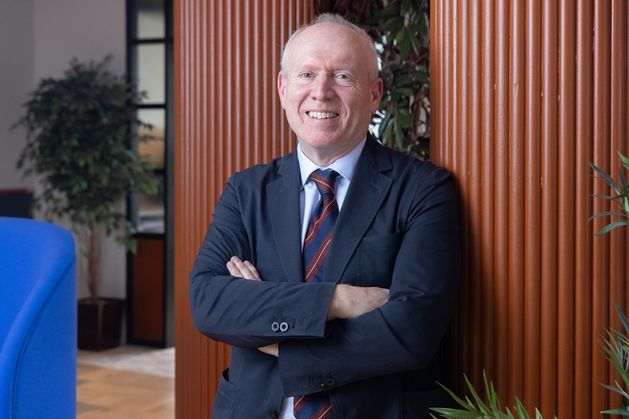Source Galileo is planning a number of floating offshore wind farms around Ireland
Kevin Lynch said that this weekend he’ll be meeting Japanese investors in Norway, where Source Galileo is involved in a floating offshore wind demonstration project and will then travel to the south of France with them to assess potential projects there. “They’ve invested with us in Norway, but they won’t touch offshore Ireland because Ireland is faffing around,” Mr Lynch said.
He said that whether or not Source Galileo can deliver its first floating offshore wind energy platform off Ireland by about 2030 “depends on the next government”.
The company is moving ahead with plans for a number of major floating offshore wind farms around Ireland and the UK. They include projects off the coasts of counties including Cork, Donegal, Wicklow and Wexford.
Floating wind farms can be built much further from shore than ones where turbines are fixed to the seabed. The technology means they can be constructed in deep waters. The Source Galileo wind farms are being planned for locations up to 32km from shore.
The wind farms will cost billions of euros to develop.
“Investors need direction and that’s where the minister has to do his job a bit better,” Mr Lynch said.
“Ministers need to run their departments, not the other way around.
“For some reason, Ireland has ended up with the best possible resource, but is last-place in Europe.”
The government has developed its Designated Maritime Area Plan (DMAP) that determines the broad areas where fixed-base offshore renewable energy projects can be developed. The government argues that this will result in plan-led development of offshore renewable energy projects.
A draft south coast DMAP has recently proposed four areas where fixed-base offshore wind farms may be developed. They include locations off Waterford and Wexford. An offshore wind auction in respect of one of the four areas is due to take place by the end of this year.
The government’s Climate Action Plan aims to have at least 5GW of installed offshore wind energy capacity by 2030. An additional 2GW of offshore wind capacity is earmarked for the production of green hydrogen and other non-grid uses.
But Mr Lynch believes that some of the “more contentious” offshore wind energy projects that are in the pipeline and planned relatively close to shore won’t even get built.
In the UK, there is a current pipeline of 95GW of offshore wind projects, with almost 15GW already operational. It’s currently assessing search areas for future rounds of offshore wind energy licensing.
“What Ireland is doing is fundamentally different from what everybody else in Europe is doing,” Mr Lynch said of the country’s offshore renewable energy plans. “It’s also fundamentally far behind it. In Norway, the government gave our demonstrator project a €200m grant.”
Mr Lynch said that Ireland also needs to capitalise on the supply side of the offshore wind energy sector.

